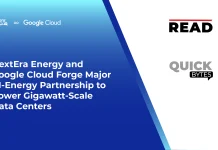According to ReAnIn, the global aircraft simulation market was valued at USD 5,837.59 million in the year 2021 and is projected to reach USD 8,952.96 million by the year 2028, registering a CAGR of 6.3% during the forecast period. Increasing demand for pilots for commercial aircraft, significant cost savings associated with the simulator in comparison with training in actual aircraft, and technological advancements in simulators are primary drivers for the aircraft simulation market. However, the COVID-19 pandemic had a severe impact on the growth of this market as various restrictions were imposed and international borders were closed for the majority of the months in 2020. Also, there is a consensus among industry experts that recovery to the pre-pandemic level might take a few years.
Also Read: Closing of Previously Announced Exclusive Codeshare Agreement Between GOL and American Airlines
Download free sample: Global Aircraft Simulation Market Growth, Share, Size, Trends and Forecast (2022 – 2028)
More than 260,000 new pilots for the civil aviation industry will be required over the next decade – according to CAE, a leading player in the aircraft simulators market
According to CAE’s pilot demand outlook report, there were about 387,000 active pilots for civil aircraft in 2019 which is expected to increase to about 484,000 in 2029. Moreover, more than 167,000 pilots will have to be replaced during this time period. Hence, about 264,000 new pilots will have to be trained between 2019 and 2029. As simulator is an important aspect of pilot training, demand for aircraft simulators is expected to increase significantly in the near future. The Asia Pacific is expected to be the growth engine with the highest demand of ~91,000, more than one-third of these new pilots.
Furthermore, technological advancements such as virtual reality (VR) and artificial intelligence (AI) is expected to fuel the growth of the flight simulators market. In April 2019, the US Air Force launched a Pilot Training Next class using VR headsets and advanced AI biometrics. The use of VR and AI significantly reduced the training period and cost. The usual pilot training system takes about a year, while VR-based training was completed in just 4 months. Moreover, the cost of VR-based flight training was about US$1,000 per unit, while the usual cost was US$4.5 million for a legacy simulator. In April 2021, European Union Aviation Safety Agency (EASA) granted the first certificate for a Virtual Reality (VR) based Flight Simulation Training Device (FSTD).




